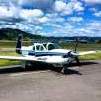-
Posts
5,466 -
Joined
-
Last visited
-
Days Won
25

Ragsf15e replied to TheAv8r's topic in Vintage Mooneys (pre-J models)

Ragsf15e replied to M20S Driver's topic in Modern Mooney Discussion

Ragsf15e replied to PeytonM's topic in Avionics/Panel Discussion

Ragsf15e replied to Jim Peace's topic in Avionics/Panel Discussion

Ragsf15e replied to PeytonM's topic in Avionics/Panel Discussion

Ragsf15e replied to Jim Peace's topic in Avionics/Panel Discussion

Ragsf15e replied to Eduleo's topic in General Mooney Talk
We have placed cookies on your device to help make this website better. You can adjust your cookie settings, otherwise we'll assume you're okay to continue.